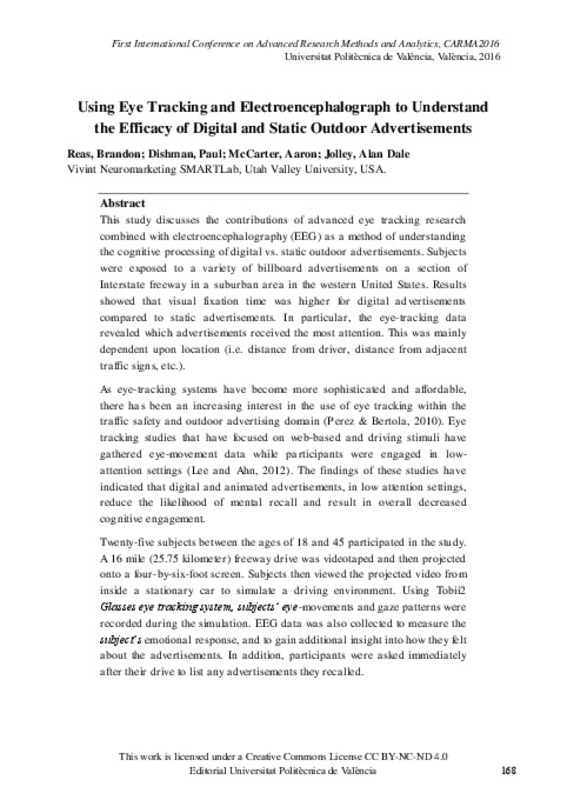JavaScript is disabled for your browser. Some features of this site may not work without it.
Buscar en RiuNet
Listar
Mi cuenta
Estadísticas
Ayuda RiuNet
Admin. UPV
Using Eye Tracking and Electroencephalography to Understand the Efficacy of Digital and Static Outdoor Advertisements
Mostrar el registro completo del ítem
Reas, B.; Dishman, P.; Mc Carter, A.; Jolley, AD. (2016). Using Eye Tracking and Electroencephalography to Understand the Efficacy of Digital and Static Outdoor Advertisements. En CARMA 2016: 1st International Conference on Advanced Research Methods in Analytics. Editorial Universitat Politècnica de València. 168-169. https://doi.org/10.4995/CARMA2016.2015.3109
Por favor, use este identificador para citar o enlazar este ítem: http://hdl.handle.net/10251/95627
Ficheros en el ítem
Metadatos del ítem
| Título: | Using Eye Tracking and Electroencephalography to Understand the Efficacy of Digital and Static Outdoor Advertisements | |
| Autor: | Reas, Brandon Dishman, Paul Mc Carter, Aaron Jolley, Alan Dale | |
| Fecha difusión: |
|
|
| Resumen: |
[EN] This study discusses the contributions of advanced eye tracking research
combined with electroencephalography (EEG) as a method of understanding
the cognitive processing of digital vs. static outdoor advertisements. ...[+]
|
|
| Palabras clave: |
|
|
| Derechos de uso: | Reconocimiento - No comercial - Sin obra derivada (by-nc-nd) | |
| ISBN: |
|
|
| Fuente: |
|
|
| DOI: |
|
|
| Editorial: |
|
|
| Versión del editor: | http://ocs.editorial.upv.es/index.php/CARMA/CARMA2016/paper/view/3109 | |
| Título del congreso: |
|
|
| Lugar del congreso: |
|
|
| Fecha congreso: |
|
|
| Descripción: |
|
|
| Tipo: |
|








